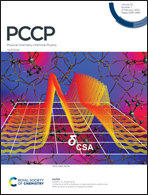Molecular dynamics study on thermal conductance between a nanotip and a substrate under vertical forces and horizontal sliding
Abstract
The heat transfer between a nanotip and its substrate is extremely complex but is a key factor in determining the measurement accuracy in tip-assisted nanomanufacturing and thermometry. In this work, the heat transfer from the nanotip to the substrate during sliding is investigated using molecular dynamics simulations. Interfacial interaction and bond formation are analyzed during the sliding process. The results show that the increase of vertical force would greatly improve the interface thermal conductance between the nanotip and the substrate. It is found that more bonds are formed and there are larger contact areas at the interface. In addition, we found that the thermal conductivity of the nanotip is another obstacle for heat transfer between the tip and substrate and it is greatly limited by the nanotip diameter near contact which is close to or even smaller than the phonon mean free path. Meanwhile, the dynamic formation and breakage of the covalent bonds during the sliding could gradually smoothen the tip apex and enhance the thermal transport at the interface. This work provides guidance for the thermal design of a nanotip-substrate system for nanoscale thermal transport measurements.



 Please wait while we load your content...
Please wait while we load your content...